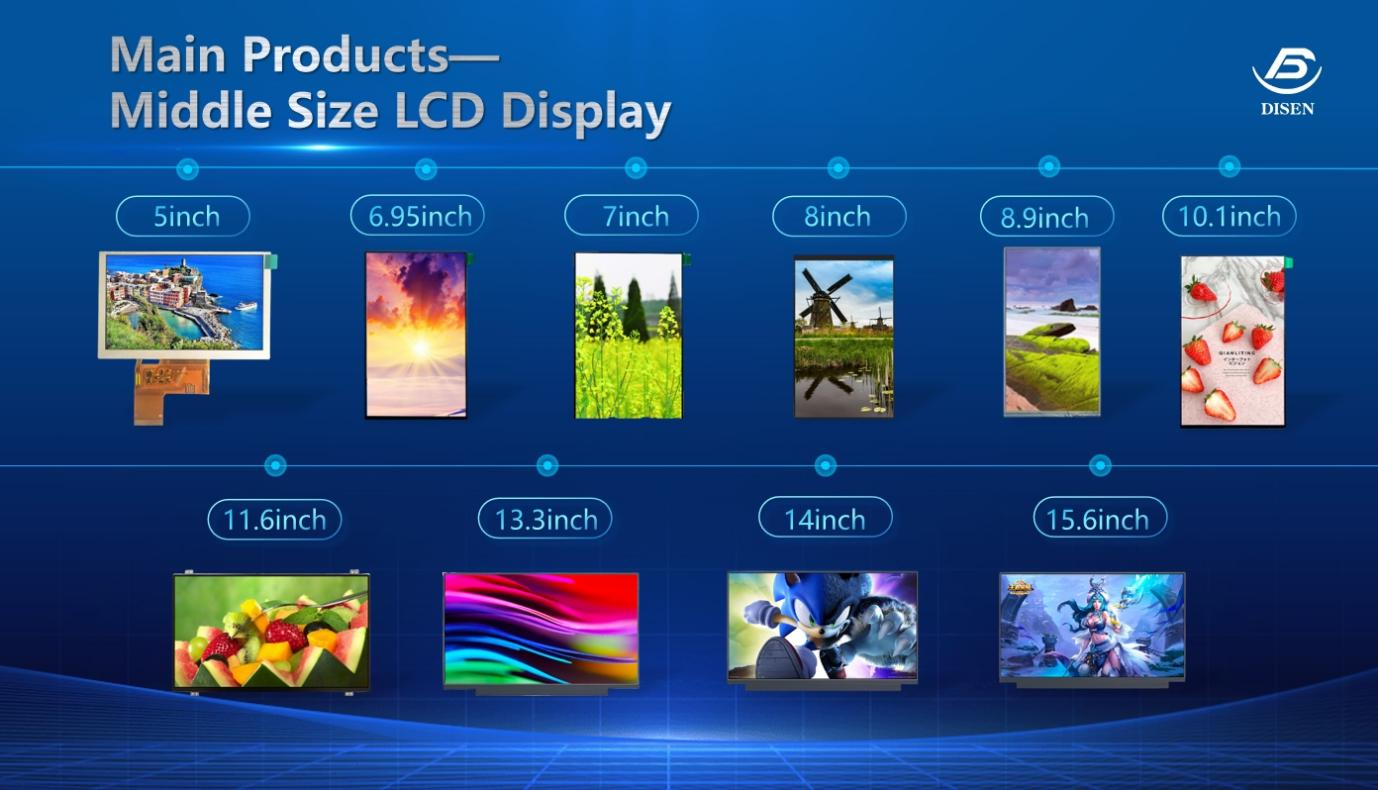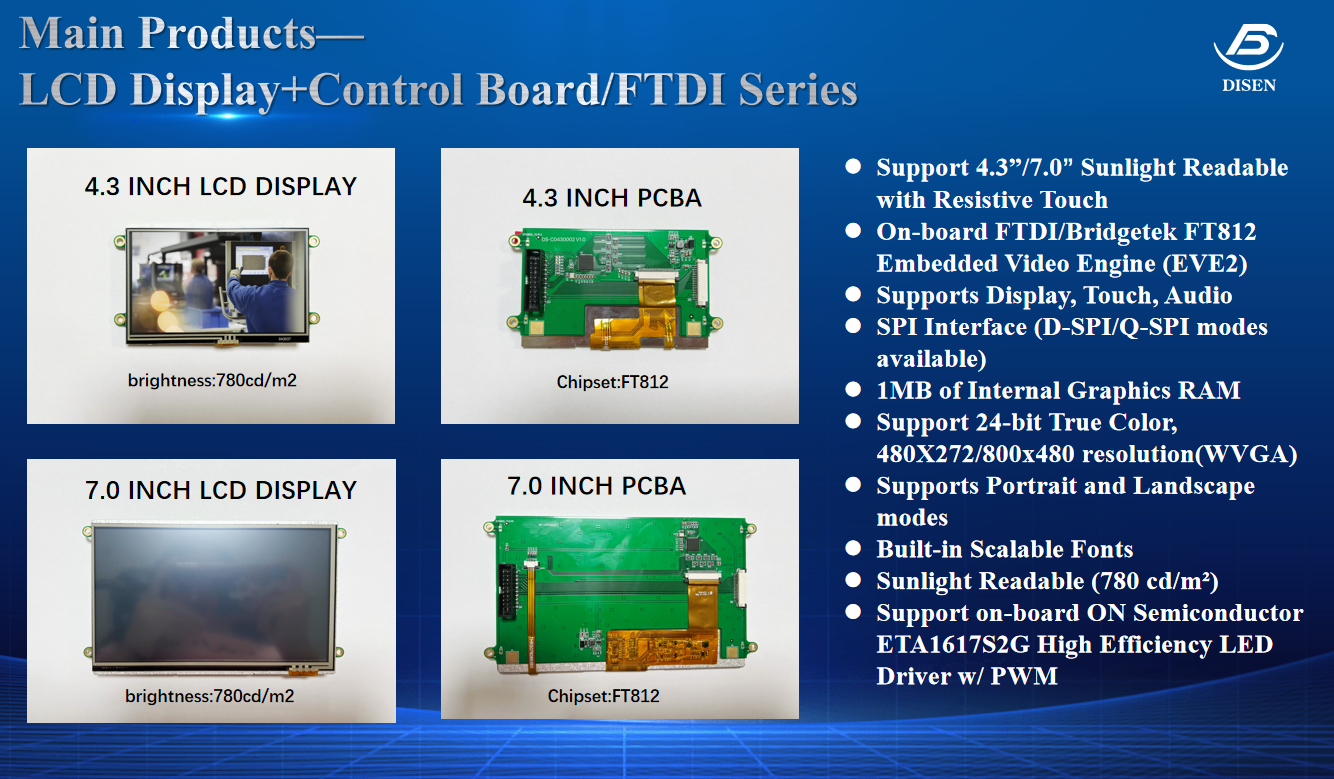In the dynamic automotive industry, the role of China Automotive Touch LCD Screens cannot be overstated. As vehicles become more technologically advanced, these screens serve as the interface between drivers and a plethora of functions, from navigation to entertainment and vehicle control. This article delves into the key aspects of these screens, including common sizes, brightness levels, parameters, and how to choose the right one for different applications.
Common Sizes of Automotive Touch LCD Screens
Automotive touch LCD screens come in a variety of sizes to meet different vehicle designs and user needs.
- Small-sized Screens (3.5 – 5 inches): These compact screens are often used in applications such as car black boxes, rearview monitors in small vehicles, or as auxiliary displays for specific functions. For example, a 3.5-inch screen with a resolution of 320×240 can be a cost-effective solution for basic information display in a simple car dashboard setup. They are easy to integrate into tight spaces and are suitable for vehicles where space is at a premium, like some compact city cars.
- Medium-sized Screens (7 – 9 inches): This size range is quite popular in many mainstream vehicles. A 7-inch screen with a resolution of 800×480 or 1024×600 is commonly used for in-car infotainment systems. It provides a good balance between visibility and space utilization. These screens can clearly display navigation maps, multimedia content, and vehicle status information. They are suitable for mid-range cars where a decent-sized display is needed without overwhelming the dashboard layout.
- Large-sized Screens (10 inches and above): In high-end luxury vehicles or some commercial vehicles like buses, larger screens are increasingly being adopted. A 12.1-inch screen with a resolution of 1024×768 or higher can offer a more immersive experience for passengers. In luxury cars, these large screens are used for advanced infotainment, rear-seat entertainment systems, and more detailed vehicle control interfaces. In buses, they can be used for route information display, advertising, and passenger entertainment.
- (Disen Main products)
Brightness Levels and Their Significance
Brightness is a crucial parameter for automotive touch LCD screens as they need to be visible in various lighting conditions.
- Low Brightness (200 – 400 nits): Screens with this brightness level are more suitable for indoor or low-light environments. For example, in a vehicle with well-shielded windows or in a garage, a 300-nit screen can display information clearly without being too harsh on the eyes. However, in direct sunlight, these screens may become difficult to read.
- Medium Brightness (400 – 800 nits): This is a common brightness range for most automotive applications. A 500-nit screen, for instance, can maintain good visibility both in normal daylight and in shaded areas. It strikes a balance between energy consumption and visibility, making it suitable for general driving conditions where the vehicle may be exposed to different lighting scenarios throughout the day.
- High Brightness (800 nits and above): Screens with high brightness are essential for vehicles operating in extremely bright environments, such as construction vehicles working outdoors or cars in sunny desert regions. A 1000-nit screen can ensure that the display remains legible even when the sun is shining directly on it, providing drivers with clear access to important information like speed, fuel level, and navigation instructions.
Other Key Parameters
- Resolution: Higher resolution screens offer sharper images and better clarity. For example, a Full HD (1920×1080) resolution screen can display detailed maps and high-quality multimedia content. It is more suitable for applications where visual accuracy is crucial, such as in high-end infotainment systems.
- Touch Screen Type: Capacitive touch screens are popular for their responsiveness and multi-touch capabilities, providing a smooth user experience similar to smartphones. Resistive touch screens, on the other hand, are more durable and can be operated with gloved hands, making them suitable for industrial or commercial vehicles where the environment may be more demanding.
- Viewing Angle: A wide viewing angle, such as 170 degrees or more, ensures that the screen is visible from different positions. This is important for vehicles with multiple passengers or in applications where the driver may need to glance at the screen from different angles.
- (Disen products)
How to Choose the Right Automotive Touch LCD Screen
- Application Requirements: Consider the primary use of the screen. If it’s for navigation and basic vehicle information display, a medium-sized screen with medium brightness and a decent resolution may be sufficient. For a more immersive entertainment experience, a larger screen with higher resolution and better color accuracy would be more suitable.
- Vehicle Type: The type of vehicle matters. A small city car may require a compact screen to fit the limited dashboard space, while a luxury SUV can accommodate a larger, more feature – rich display.
- Environmental Conditions: If the vehicle operates in extreme lighting conditions, a screen with high brightness and good anti – glare properties should be chosen. For vehicles in dusty or harsh environments, a more durable touch screen type like resistive may be preferred.
In conclusion, choosing the right China Automotive Touch LCD Screen involves a careful consideration of size, brightness, parameters, and the reputation of the display manufacturer. By understanding these factors, customers can make an informed decision that meets their specific automotive display needs.
SHENZHEN DISEN DISPLAY TECHNOLOGY CO., LTD is a high – tech enterprise integrating R&D, design, production, sales, and service. Specializing in industrial and automotive display screens, touch panels, and optical bonding solutions, the company has accumulated extensive expertise in TFT LCDs, industrial/automotive displays, touch technologies, and full lamination. Their products are widely applied in medical devices, industrial handheld terminals, IoT devices, and smart home systems, catering to diverse market demands with reliable performance and innovative designs.
Our commitment to innovation and quality ensures reliable, high – performance displays tailored to meet diverse market demands. Whether you need standard products or customized designs, our team delivers cutting – edge solutions to enhance user experiences. Contact us today to explore how we can elevate your display technology needs!
Post time: Apr-27-2025









